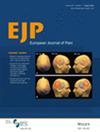Plasma Proteomic Analysis of Patients With Herpes Zoster to Identify Predictors of Postherpetic Neuralgia Risk
Abstract
Background
Postherpetic neuralgia (PHN) is a common and severe complication of herpes zoster (HZ). However, the understanding of the pathological mechanism relevant in the earlier phase of PHN is limited. This study aimed to explore the association of plasma proteins with PHN risk and identify candidate proteins to predict PHN during the acute phase of HZ infection.
Methods
Liquid chromatography tandem mass spectrometry (LC–MS/MS)-based proteomic technology was used to profile characteristic proteins in 31 patients with HZ infection.
Results
The levels of 318 plasma proteins were quantified in acute HZ infected patients by untargeted proteomics. Twenty-four plasma proteins were dysregulated in HZ infected patients developing PHN compared with recovered patients. Among these proteins, 16 plasma proteins may be correlated with PHN risk. TTR, NCAM1 and SH3BGRL3 were first proposed as candidate biomarkers for PHN. The baseline level of TTR increased, and NCAM1 and SH3BGRL3 decreased in the PHN group. They may affect the prognosis of HZ through extracellular exosome and complement activation (classical pathway). Besides, the baseline level of TTR may positively correlate with the pain severity of PHN.
Conclusion
Altered abundance of plasma proteins in HZ infected patients was associated with PHN risk. In this study, TTR, NCAM1 and SH3BGRL3 were identified as potential predictors of PHN in early HZ infected patients. These results contribute to revealing the pathological mechanism and potential therapeutic targets of PHN.
Significance Statement
This study first proved that protein expression in HZ infected patients with opposite outcomes is different, and proposed three potential biomarkers to predict PHN risk in the acute phase of HZ infection. Further research is needed to determine whether protein expression is related to the severity of pain.

 求助内容:
求助内容: 应助结果提醒方式:
应助结果提醒方式:


